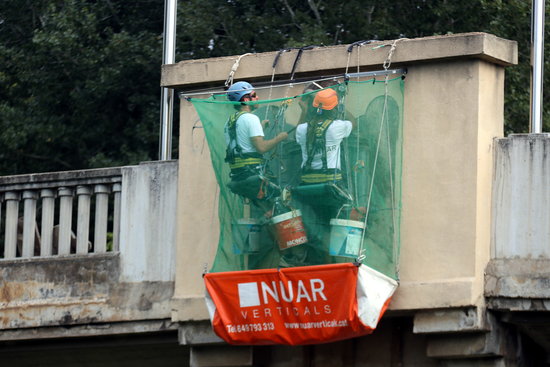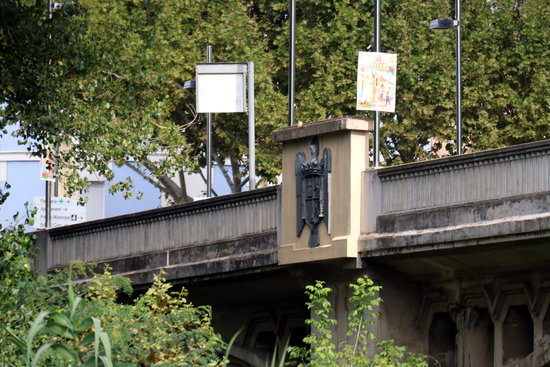Work begins to remove Francoist symbols in Girona
The four eagles on bridge have "no patrimonial value" says local mayor, calling removal act of "justice"

Operations to remove four Francoist symbols in northern Catalonia have begun. Work began on Monday morning to remove four eagles, synonymous symbols of dictator Francisco Rfranco's regime from Aigua bridge in the city of Girona, nearly eight decades on from when they were installed by the dictatorship.
The year was 1939, when prisoners of the regime rebuilt the bridge connecting Girona and Sarrià de Ter, that had been bombed during February of the same year.
The removal of the symbols will take two days, and they will not be reserved as they "have no patrimonial value" according to Girona mayor Marta Madrenas.
Madrenas has highlighted that the removal of the Francoist eagles is an act of "justice" and a "homage" to the repressed of the Francoist dictatorship.
"When Spain is still debating what to do with the Valley of the Fallen, in Catalonia it is very clear that we must eliminate anything related to Francoism," Madrenas said.

Removal of Francolist symbols obligatory
43 years after the Spanish dictator's death, Francoist símbols can still be found on façades and public buildings in various spots throughout the country.
The amount of Francoist symbols has been reduced over the years, but some still persist, including a monument in the Ebre river in Tortosa.
The Catalan justice minister, Ester Capella, announced in July that her department will put forward an historical memory law that will make the removal of Francoist symbols from public spaces obligatory.
"The new historical memory law will be a tool to heal wounds and finish with the mourning," said Capella in Parliament.
The legislation will enable the Catalan government to withdraw Francoist symbols in streets and squares, annul awards and change names of streets paying tribute to people related to dictatorships or crimes against humanity.
This, even if town halls oppose the decisions.